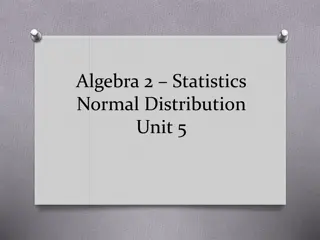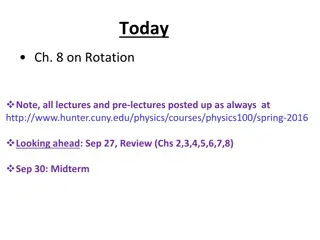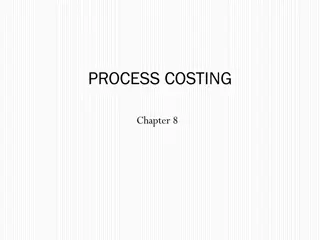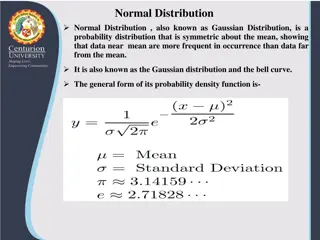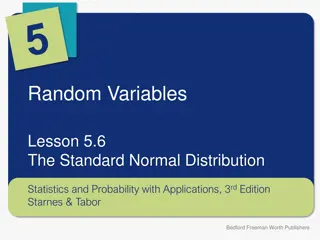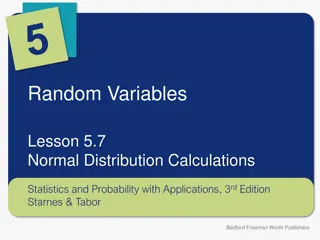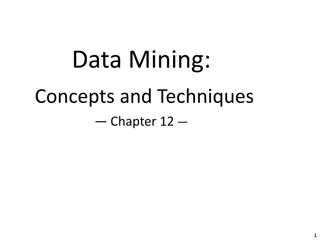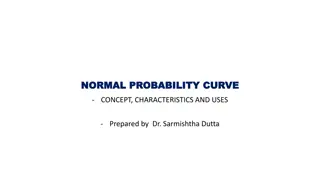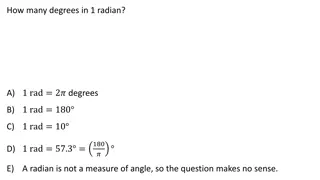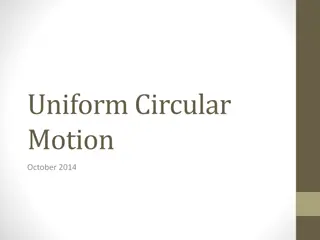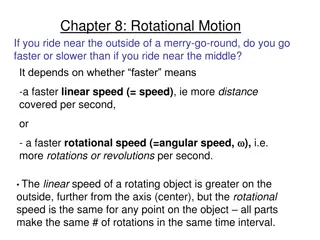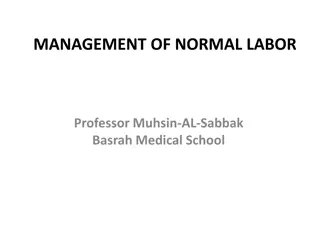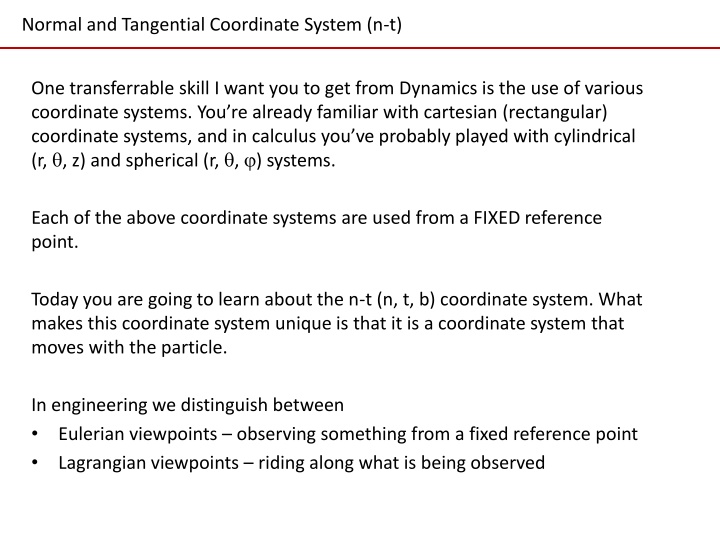
Curvilinear Motion: Understanding Normal and Tangential Coordinate Systems
Learn about normal and tangential coordinate systems (n-t) used in dynamics. Explore how these systems differ from fixed reference point systems, and their significance in fluid dynamics and engineering applications. Gain insights into the Eulerian and Lagrangian viewpoints and their role in modeling behavior in different coordinate systems.
Uploaded on | 2 Views
Download Presentation

Please find below an Image/Link to download the presentation.
The content on the website is provided AS IS for your information and personal use only. It may not be sold, licensed, or shared on other websites without obtaining consent from the author. If you encounter any issues during the download, it is possible that the publisher has removed the file from their server.
You are allowed to download the files provided on this website for personal or commercial use, subject to the condition that they are used lawfully. All files are the property of their respective owners.
The content on the website is provided AS IS for your information and personal use only. It may not be sold, licensed, or shared on other websites without obtaining consent from the author.
E N D
Presentation Transcript
Normal and Tangential Coordinate System (n-t) One transferrable skill I want you to get from Dynamics is the use of various coordinate systems. You re already familiar with cartesian (rectangular) coordinate systems, and in calculus you ve probably played with cylindrical (r, , z) and spherical (r, , ) systems. Each of the above coordinate systems are used from a FIXED reference point. Today you are going to learn about the n-t (n, t, b) coordinate system. What makes this coordinate system unique is that it is a coordinate system that moves with the particle. In engineering we distinguish between Eulerian viewpoints observing something from a fixed reference point Lagrangian viewpoints riding along what is being observed
Normal and Tangential Coordinate System (n-t) Fluid dynamics is one field that frequently uses these two viewpoints. Your choice of a coordinate system shouldn t change the behavior being simulated. But it should change the equations. Some phenomenon will be easier to math model in a certain coordinate system.
Normal and Tangential Coordinate System (n-t) Here are two other examples from Pacific Raceways (Kent, WA) Eulerian: https://www.youtube.com/watch?v=t7lyDfgegbU Lagrangian: https://vimeo.com/30318739 FWIW: Lagrangians have more fun ;)
Normal and Tangential Coordinate System (n-t) But wait, there s more!!! Here is some in-car footage with telemetry. Pay attention to the g-meter (lower left of the gauges). What are the peak values in the normal direction? What are the peak values in the tangential direction? What is the transition like between peaks in each? https://www.youtube.com/watch?v=UkNHuhuKKYo Outside the scope of this class, what are the implications of a 3-axis accelerometer mounted to a car vs. a motorcycle? What does this mean for other things, like oil and fuel pump inlets?
12.7 Curvilinear Motion: Normal and Tangential Components Planar Motion: Coordinate system has origin at a fixed point on the curve, and at the instant considered this origin happens to coincide with the location of the particle. u u (tangential unit vector) (normal unit vector) t Position: n The tangential direction, t is tangent to the path and points in the direction of motion. = v u (EQ 12-15 ) v t Velocity: The normal direction, n is perpendicular to the tangential direction and points to the instantaneous center of curvature 0 . v s = (EQ 12-16)
12.7 Curvilinear Motion: Normal and Tangential Components Acceleration Analysis: Acceleration is time rate of change of velocity: = = a v + u u u 0! v v t t t = = = u u & & d d ds d s t n s v = = = u u u u t n n n Acceleration: = + a u u (EQ 12-18) a a t t n n = v (EQ 12-19) a v t 2 = (EQ 12- 20) a n = + a a a 2 t 2 n magnitude:
12.7 Curvilinear Motion: Normal and Tangential Components Acceleration Special Cases: Particle moves along a straight line: = a a = = 0 & a v n t Particle moves along a curve with constant speed: = = a a = = 0 & a v v 2 t n Three-Dimensional Motion: = u u u binormal axis: b t n
Chain Rule For your homework tonight (and in many cases this semester) you will need to use the Chain Rule and Product Rule in order to take derivatives. Here is a quick refresher: You may remember from calculus classes: If a = f(b), and b = f(c), then the derivative of a with respect to c will be found using the chain rule ?? ??=?? ?? ?? ?? In problem 12-79 you have: y = f(x), and x = f(t). The time derivative of y will be found using the chain rule ?? ??=?? ?? ?? ??
Chain Rule and Product Rule To get the second time derivative of y you will use both the Chain Rule and the Product Rule Derivative of the first term (treating second term as a constant) + derivative of the second term (treating first term as a constant) ?? ??=?? ?? ?? ?? Time derivative of ?? Time derivative of ?? ?? ?? ?2? ??2= ?2? ??2 ?2? ??2 ?? ?? ?? ?? +?? ?? 2 ?2? ??2=?2? ?2? ??2 ?? ?? +?? ?? ??2
In-Class Practice Problem 1 What do you notice about this problem? Key words? What information do you know? What are you trying to find? How to you approach the problem? What equation(s) will you use?
In-Class Practice Problem 1 About 87 mph
In-Class Practice Problem 2 What do you notice about this problem? Key words? How to you approach the problem? What do you do with the acceleration vector? What equation(s) will you use?
In-Class Practice Problem 3 What do you notice about this problem? Key words? How to you approach the problem? What equation(s) will you use?
In-Class Practice Problem 3 Could have also used ? = ?0+ ?0? +1 ? = 0 + 0? +1 2???2 2(4)6.9992 s = 97.97 m

